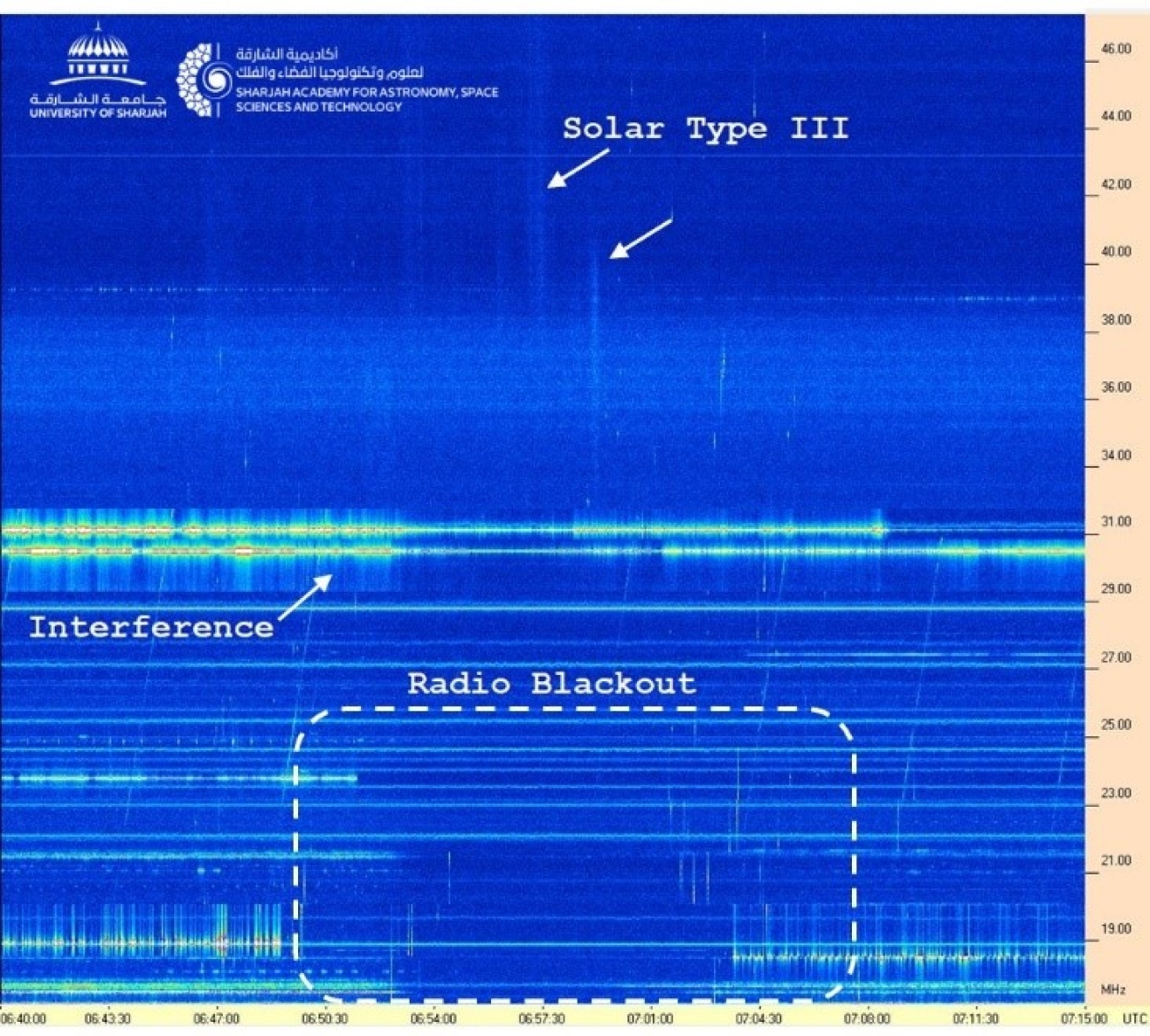The Low-Frequency Radio Telescope at SAASST detected this sudden ionospheric disturbance from 06:50 to 7:03 UT (10:50-11:03 local time).
The giant sunspot, AR3576, has been observed facing Earth, measuring more than 124,274 miles and containing at least four dark cores larger than Earth. Sunspots are indicators of solar activity, and as we approach the solar maximum, the frequency of sunspot regions like AR3576 is increasing. This magnetically complex sunspot is already producing M-class solar flares and is forecasted to pose a threat to X-class solar flares. Strong solar flares can disrupt satellites and electronic technology on Earth. Scientists are closely monitoring the sunspot and its potential impact on space weather.
Sunspot AR3576: A Colossal Phenomenon
AR3576, a colossal sunspot, is so large that it was seen from Mars by NASA's Perseverance Rover. This giant sunspot spans more than 124,274 miles and contains at least four dark cores, each larger than Earth. It's currently generating M-class solar flares, and forecasts predict it could also pose a threat to X-class solar flares. These powerful solar flares can be accompanied by Coronal Mass Ejections (CMEs), disrupting our magnetosphere and creating geomagnetic storms. These disturbances can potentially create havoc with satellites in space and even electronic technology on Earth.
The Implications of Sunspot AR3576
As the sunspot AR3576 points towards Earth, it poses a potential threat to our planet. X-class solar flares, which AR3576 is predicted to produce, can potentially create global transmission problems and worldwide blackouts. Agencies worldwide are monitoring this celestial event to mitigate its potential impacts on our planet.
Monitoring of Sunspot AR3576
Scientists at NOAA's Space Weather Prediction Center analyze sunspot regions daily to assess the threats they pose. The World Data Center for the Sunspot Index and Long-term Solar Observations also tracks sunspots. It records the highs and lows of the solar cycle to evaluate solar activity and improve space weather forecasting.
Solar Activity Forecast
The sunspot active region AR3576 is the largest in extension with the most complex magnetic configuration and has been producing a flurry of flares in the last 24 hours. The forecast for the next 24 hours is a 99% chance for C flares, a 60% chance for M flares, and a 25% chance for X flares. The sun currently has eight labeled active regions on its Earth-facing side. Sunspot region AR3575 produced an M5.2 flare and a coronal mass ejection, while AR3576 is also showing potential for big flares and eruptive activity.
In conclusion, the colossal sunspot AR3576 is a cosmic phenomenon that is being closely monitored due to its potential to disrupt our technological infrastructure. As we continue to study this sunspot, we hope to understand its behavior better and mitigate its potential impacts on our planet.



